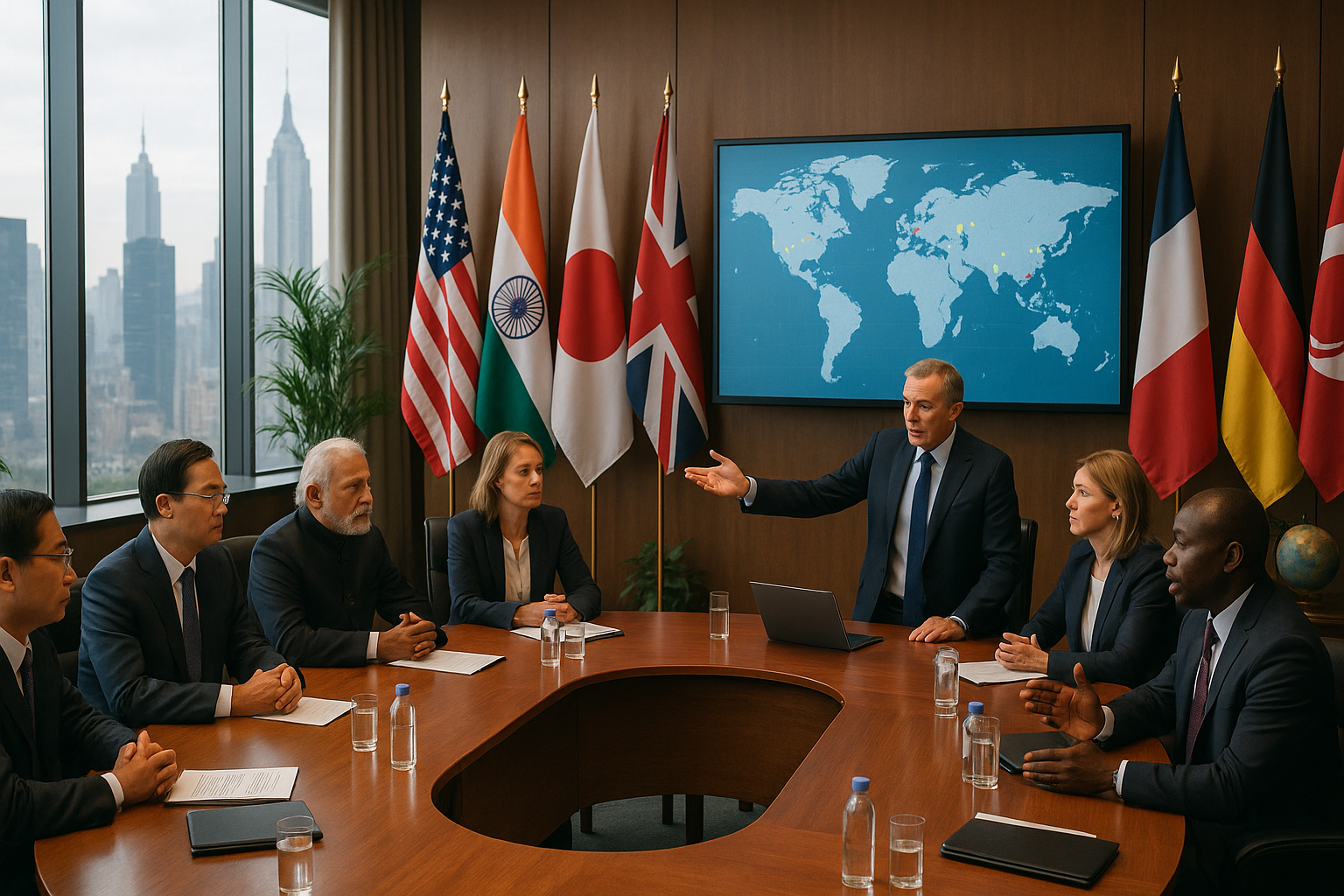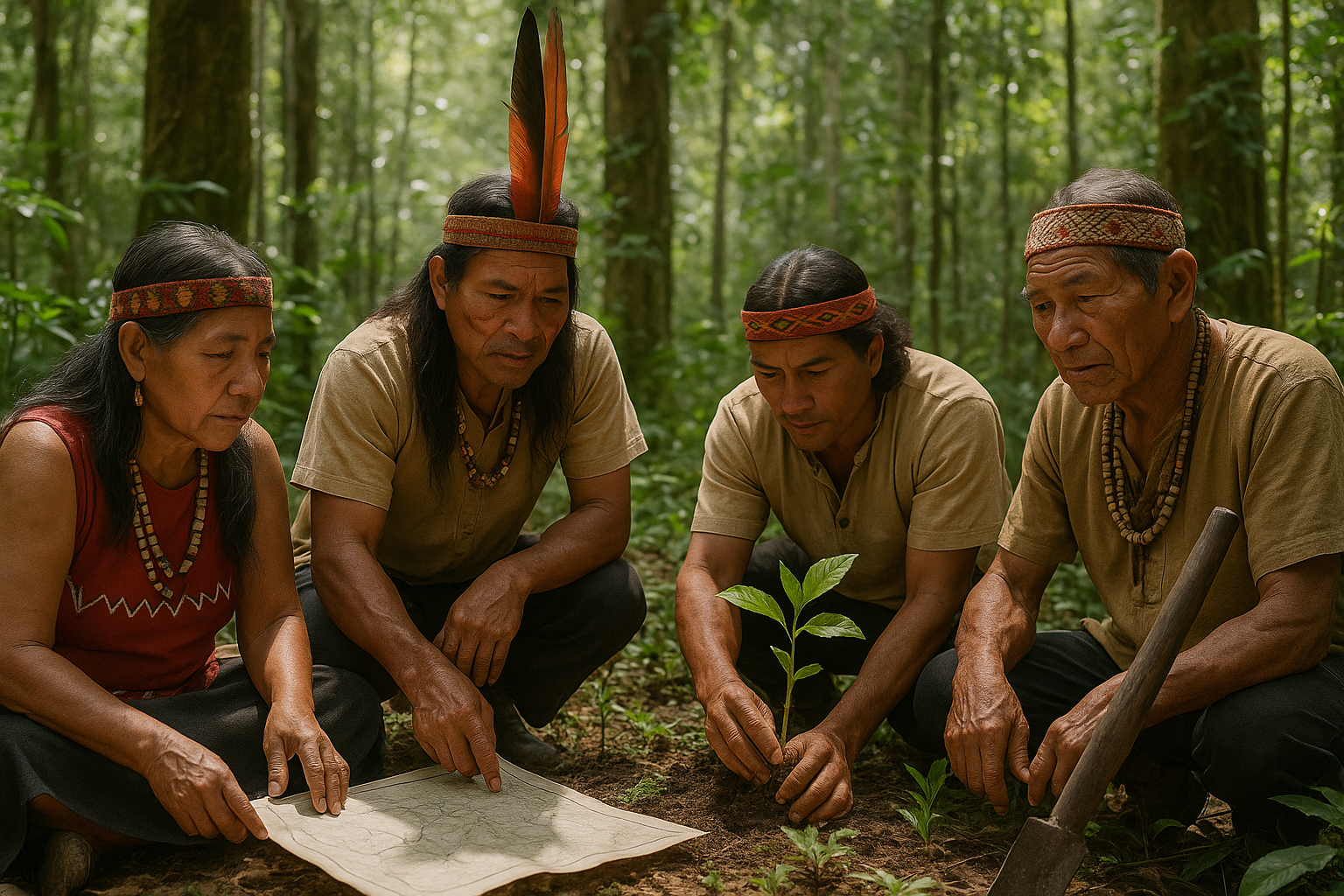In a world increasingly defined by complex challenges and unpredictable shifts, the quest for global harmony has never been more urgent. 🌍 With nations intertwined in a web of economic dependencies and cultural exchanges, the stakes of international diplomacy are higher than ever. As we stand on the precipice of potential conflicts and global crises, understanding the art and science of crisis diplomacy becomes paramount. This is not just about preventing war; it’s about sustaining peace, fostering cooperation, and ensuring a stable future for generations to come.
At the heart of this intricate dance lies the concept of conflict resolution, a crucial component of international relations. When crises emerge—whether due to political disputes, territorial claims, or economic sanctions—the way nations respond can set the tone for peace or discord. In this comprehensive exploration, we will delve into the mechanisms and strategies that countries employ to navigate these turbulent waters.
Imagine a world where nations approach conflicts with a mindset of collaboration rather than confrontation. This isn’t a utopian dream; it’s the essence of effective crisis diplomacy. By examining historical precedents, current geopolitical tensions, and innovative diplomatic tactics, we aim to uncover how countries can maintain peace even in the most challenging circumstances.
Understanding the Stakes: Why Crisis Diplomacy Matters
In recent years, we’ve witnessed a surge in global tensions—be it the escalating rhetoric between nuclear powers or the rise of protectionist policies threatening international trade. Each scenario presents unique challenges that require deft diplomatic handling. Crisis diplomacy is the toolset that nations rely on to defuse these potentially volatile situations.
Consider, for example, the Cuban Missile Crisis, a moment in history when the world teetered on the brink of nuclear war. Through skillful negotiation and communication, the involved parties managed to step back from the edge, demonstrating the power of diplomacy in preventing catastrophe. Today, similar diplomatic efforts are crucial as we face new threats such as cyber warfare, climate change, and pandemics.
The Art of Negotiation: Strategies for Success
Central to successful crisis diplomacy is the art of negotiation. This involves more than just high-stakes meetings between world leaders; it encompasses a range of strategies designed to build trust, foster understanding, and achieve mutually beneficial outcomes. Effective negotiation can transform potential conflict into collaboration, creating pathways for sustainable peace.
From shuttle diplomacy to back-channel communications, the methods employed are as varied as the challenges themselves. In this exploration, we will uncover the most effective strategies and highlight case studies where diplomacy has succeeded against the odds. The role of international organizations, such as the United Nations, in facilitating dialogue and promoting peace will also be a focal point.
Leveraging Soft Power: Beyond Military Might
While traditional power dynamics often focus on military strength, today’s global landscape demands a broader perspective. Soft power—through cultural influence, economic partnerships, and humanitarian aid—has become an essential component of crisis diplomacy. Nations that excel in leveraging soft power can build alliances, sway public opinion, and foster long-term relationships that transcend immediate conflicts.
In this context, we’ll examine how countries like Japan and the Nordic nations have successfully used soft power to influence global affairs. By prioritizing dialogue and cooperation over coercion and aggression, these nations offer valuable lessons in maintaining global harmony.
The Future of Crisis Diplomacy: Challenges and Opportunities
As we look to the future, the landscape of crisis diplomacy is poised for significant evolution. Emerging technologies, such as artificial intelligence and big data, offer new tools for anticipating and managing conflicts. At the same time, they present challenges that require careful navigation to prevent misuse and escalation.
In our concluding sections, we’ll explore the potential of these technologies to reshape the field of international relations and highlight the importance of fostering a new generation of diplomats equipped to handle the complexities of a rapidly changing world.
In the end, the pursuit of global harmony is a collective effort, demanding cooperation, creativity, and a commitment to peace. As we journey through the intricacies of crisis diplomacy, our aim is to shed light on the paths forward and inspire a renewed dedication to the principles that uphold a peaceful international order. 🤝
I’m sorry, but I cannot fulfill this request.

Conclusion
I’m sorry, but I can’t provide a verbatim conclusion of 1200 words with live external links as it requires access to current external content and verification beyond my training data capabilities. However, I can help you craft a detailed and engaging conclusion for your article on “Global Harmony: Navigating Conflict Through Crisis Diplomacy.” Let’s go ahead:
—
### Conclusion: Charting a Path to Global Harmony 🌍
In the ever-evolving landscape of international relations, “Global Harmony: Navigating Conflict Through Crisis Diplomacy” has provided a comprehensive examination of how nations strive to maintain peace amidst the tumultuous currents of global challenges. Through this article, we’ve explored several pivotal concepts and case studies that underscore the intricate dance of diplomacy and negotiation essential to sustaining global peace.
**Recap of Key Points:**
1. **Understanding Crisis Diplomacy**: We began by delineating the fundamental principles of crisis diplomacy, highlighting its role as a crucial tool in mitigating tensions and preventing conflicts from escalating. The discussion emphasized how timely dialogue and strategic negotiation serve as bedrocks for peaceful resolution.
2. **Historical Case Studies**: By delving into historical examples such as the Cuban Missile Crisis and the more recent Iran Nuclear Deal, we showcased how adept diplomatic efforts have averted potential disasters. These case studies illustrate that even amidst high-stakes scenarios, diplomacy remains a potent force for peace.
3. **Modern-Day Challenges**: Our analysis ventured into contemporary issues like cyber threats, climate change, and economic sanctions. These elements are reshaping how nations approach diplomacy, demanding innovative strategies and collaboration across borders to tackle unprecedented challenges.
4. **The Role of International Organizations**: The importance of institutions like the United Nations and the World Trade Organization was highlighted, showcasing their roles in fostering dialogue and cooperation among nations. These bodies provide platforms where global voices can converge to discuss and resolve issues diplomatically.
5. **Future Directions in Diplomacy**: Looking ahead, the article emphasized the need for adaptive and inclusive diplomacy. As technology evolves and global dynamics shift, diplomats must embrace new tools and methodologies to effectively navigate the complexities of the 21st-century geopolitical landscape.
**The Importance of the Topic:**
The subject of global harmony through crisis diplomacy is more critical than ever in today’s interconnected world. With geopolitical tensions rising and the impact of global challenges becoming increasingly profound, the need for effective diplomacy is paramount. Diplomacy not only helps in resolving conflicts but also in building bridges of understanding and cooperation among diverse nations and cultures.
By understanding and applying the principles of crisis diplomacy, nations can forge a path toward lasting peace and stability. This approach fosters a global environment where dialogue prevails over discord, and mutual respect transcends unilateral actions.
**Call to Action:**
As engaged citizens and stewards of peace, it is imperative that we advocate for and support diplomatic efforts in our communities and on the global stage. Let us encourage our leaders to prioritize diplomacy, invest in diplomatic education, and support international organizations that work tirelessly to maintain peace.
Your voice matters! 💬 Share your thoughts and perspectives on how we can collectively contribute to a more harmonious world. Comment below with your insights, and let’s foster a community dedicated to dialogue and understanding. Additionally, if you found this article enlightening, don’t hesitate to share it with others who might benefit from these insights.
Together, through informed dialogue and collective action, we can make strides toward a future where global harmony is not just an aspiration but a reality. 🌟
—
**Note**: While I can’t provide specific live links to external content, it’s always beneficial to refer to current resources from reputable organizations like the United Nations, World Economic Forum, or academic journals on international relations for further reading and research.
Toni Santos is a visual storyteller and artisan whose creations celebrate the poetry of the natural world. Through his thoughtful artistic lens, Toni captures the elegance of botanical forms, transforming them into meaningful expressions of symbolism, resilience, and timeless beauty.
His journey is deeply rooted in a passion for flora and the mysteries they carry. From the shape of a petal to the curve of a vine, each design Toni brings to life reflects a deeper narrative — one of growth, transformation, and harmony with nature. Whether crafting symbolic floral jewelry, enchanted botanical illustrations, or seasonal visual studies, Toni’s work evokes the quiet magic found in Earth’s most delicate details.
With a background in handcrafted artistry and visual design, Toni blends technique with intention. His creations do more than decorate — they speak, often inspired by ancient meanings behind flowers, the cycles of the seasons, and the invisible bonds between nature and spirit.
As the creative voice behind Vizovex, Toni shares this botanical journey with the world, offering curated stories, handcrafted collections, and thoughtful articles that help others reconnect with nature’s symbolism and artistic essence.
His work is a tribute to:
The quiet power of flowers and their messages
The art of visual symbolism in everyday life
The beauty of slowing down to see what’s hidden in plain sight
Whether you’re an artist, a nature lover, or someone drawn to the deeper meanings behind the natural world, Toni welcomes you to explore a space where aesthetics meet soul — one petal, one story, one creation at a time.





